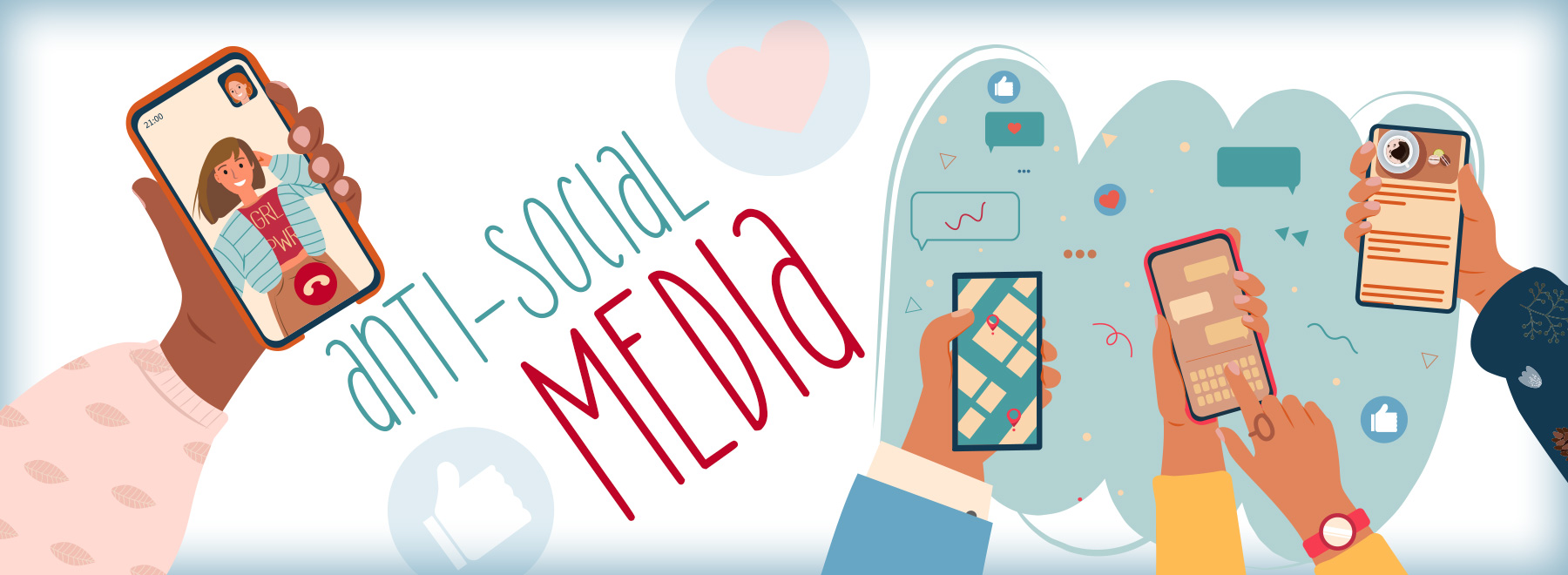Protecting children’s mental health in the digital age
Smartphones have become nearly impossible to separate from daily life, especially for teenagers. They are tools for schoolwork, entertainment and staying in touch with friends, but they can also provide risks that weigh heavily on developing minds.
Teenagers are particularly vulnerable to some of the risks associated with smart devices, including body image dissatisfaction, cyberbullying, internet addiction, loneliness and negative moods. A study conducted by Psychiatric Times found that 12- to 15-year-olds who spent more than three hours per day on social media were at higher risk for poor mental health outcomes, including anxiety and depression.

“Young people not only have access to the internet but they are actively seeking it out for knowledge, new experiences and connection,” said Dr. Gabrielle Banks, associate professor at the Center for the Advancement of Youth. “The internet allows unfettered access to the world and in some ways the world now has unfettered access to them. As such, we have learned that monitoring and guidance regarding internet and social media consumption are key to support healthy and balanced development in the digital era.”
Up from just 32% in 2022, nearly half (48%) of U.S. teens now say social media has a mostly negative effect on their peers. About 45% of teens also say they spend too much time on social media, compared to 36% three years earlier.
While many still see the benefits, such as connection with friends, creative expression and even finding useful mental health resources, the overall picture is that young people are becoming increasingly skeptical of the digital world.
Teen girls, in particular, report more harm. One in four say social media harms their mental health, compared to just 14% of boys. Half of girls say it interferes with sleep, and 20% say it lowers their confidence. By contrast, boys are more likely to shrug off negative impacts or report their experience as neutral.
That doesn’t mean, however, that boys are immune to the negative effects of being online.
“Jonathan Haidt discusses this in his book, The Anxious Generation, that some harms are particular to girls and others are particular to boys,” said Banks. “Where girls may be more likely to experience mood disorders as a result of overuse of social media, for boys, it is more often overuse and addiction to gaming.”
Even when the apps are meant for fun, the content that reaches teens isn’t always lighthearted. Social platforms have become a primary way people encounter news, often delivering snippets of violence, tragedy or conflict without context.
The endless exposure to distressing headlines, or violent imagery, heightens anxiety. For teens, who are still developing emotional regulation and media literacy skills, the flood of negative or sensational content can be destabilizing.
“Another issue is that living in these online spaces can cause kids to become more socially withdrawn,” Banks said. “Teenagers don’t spend time unplugged, face-to-face with their friends as often as previous generations.”
The problem is compounded by the reality of school life. Nearly a third of teenagers say anxiety and depression are common at their schools, and more than one in five say bullying is highly common. Social media and online gaming don’t cause those problems, but it can amplify them by extending conflicts beyond the school day, reinforcing the pressure to look a certain way or just making it more difficult to unplug and disconnect.
The risks often come down to timing and balance. Long, late-night scrolling sessions can cut into sleep, while constant notifications pull attention from homework or family time. Content matters, too. Feeds that lean heavily on beauty filters or negative news topics tend to leave kids feeling worse. But when social media is used in moderation, it can strengthen friendships, provide outlets for creativity and connect teens to communities that can make them feel less alone.
Parents and caregivers aren’t powerless when it comes to protecting their children from the effects of smart devices. Setting time-limits or screen-free periods, such as during dinner or an hour before bedtime, can help children wind down, sleep better and stay engaged in family life.
Talking openly about what they see online can defuse distressing content and strengthen critical thinking.
“When giving guidance to parents about discussing social media with their teens, we also recommend eliciting the teen’s thoughts on social media, internet content, it’s detriments and possible solutions to combat those detriments,” Banks said. “We want to acknowledge and support their ability to assess parts of a situation and make informed decisions without insinuating that they are unable to do so.”
Perhaps most importantly, adults can model their own healthy boundaries by turning off notifications at night or limiting news intake to specific times of day.
Smartphones aren’t going away, and most families wouldn’t want them to. But as the evidence grows clearer, so does the need for regulation. The goal isn’t to ban screens, but to help kids use them in ways that protect sleep, support learning and leave time for joy offline.
The above article appears in CONSULT, UMMC’s monthly e-newsletter sharing news about cutting-edge clinical and health science education advances and innovative biomedical research at the Medical Center and giving you tips and suggestions on how you and the people you love can live a healthier life. Click here and enter your email address to receive CONSULT free of charge. You may cancel at any time.



